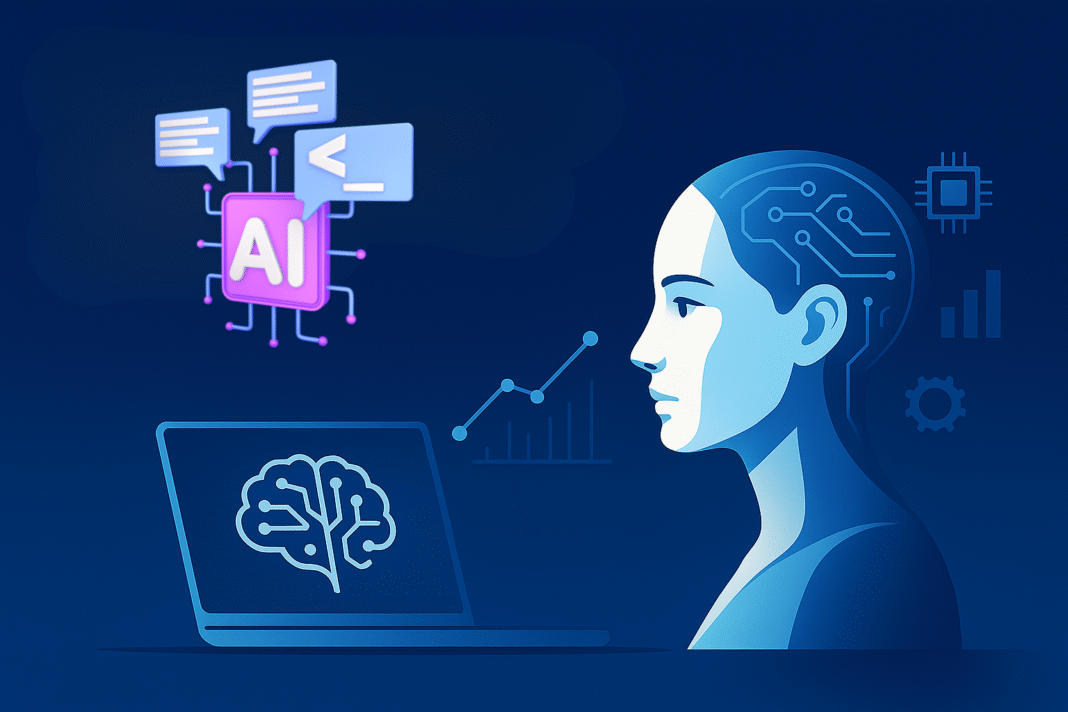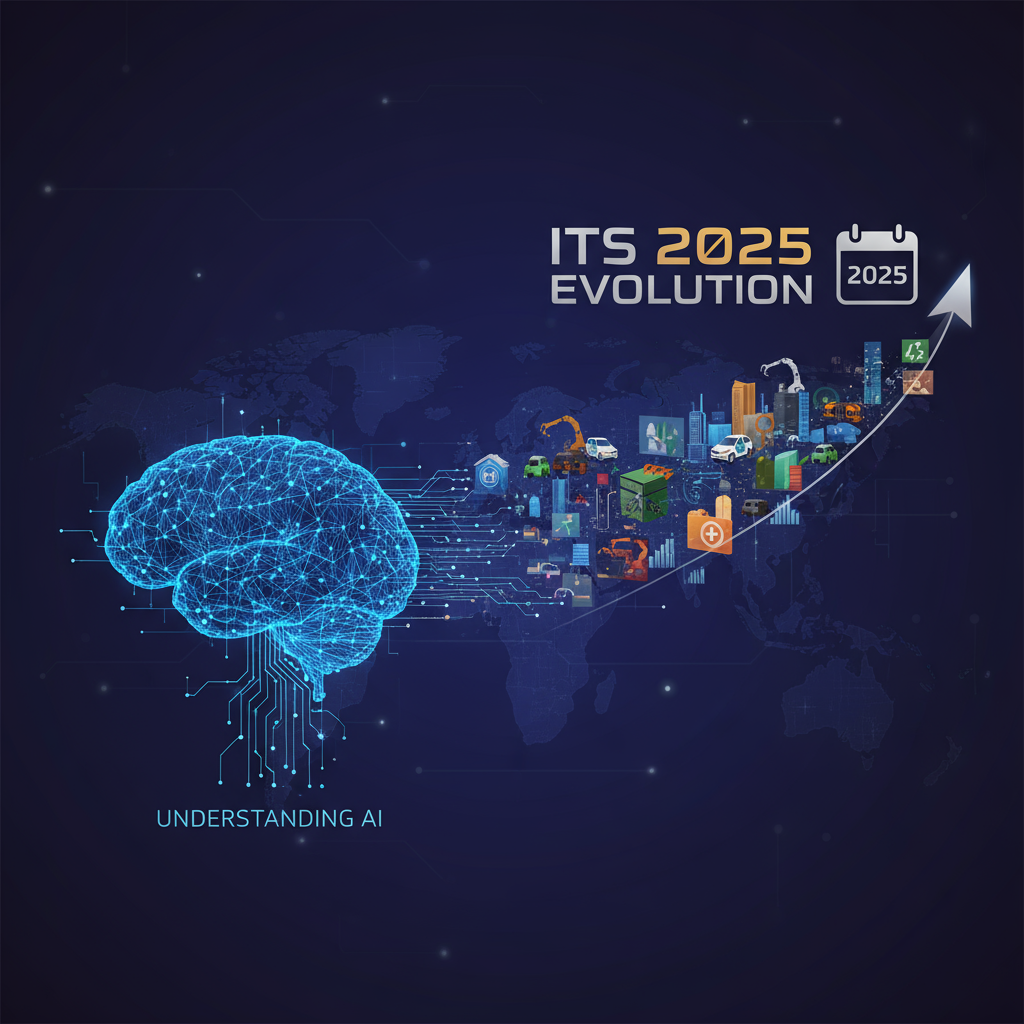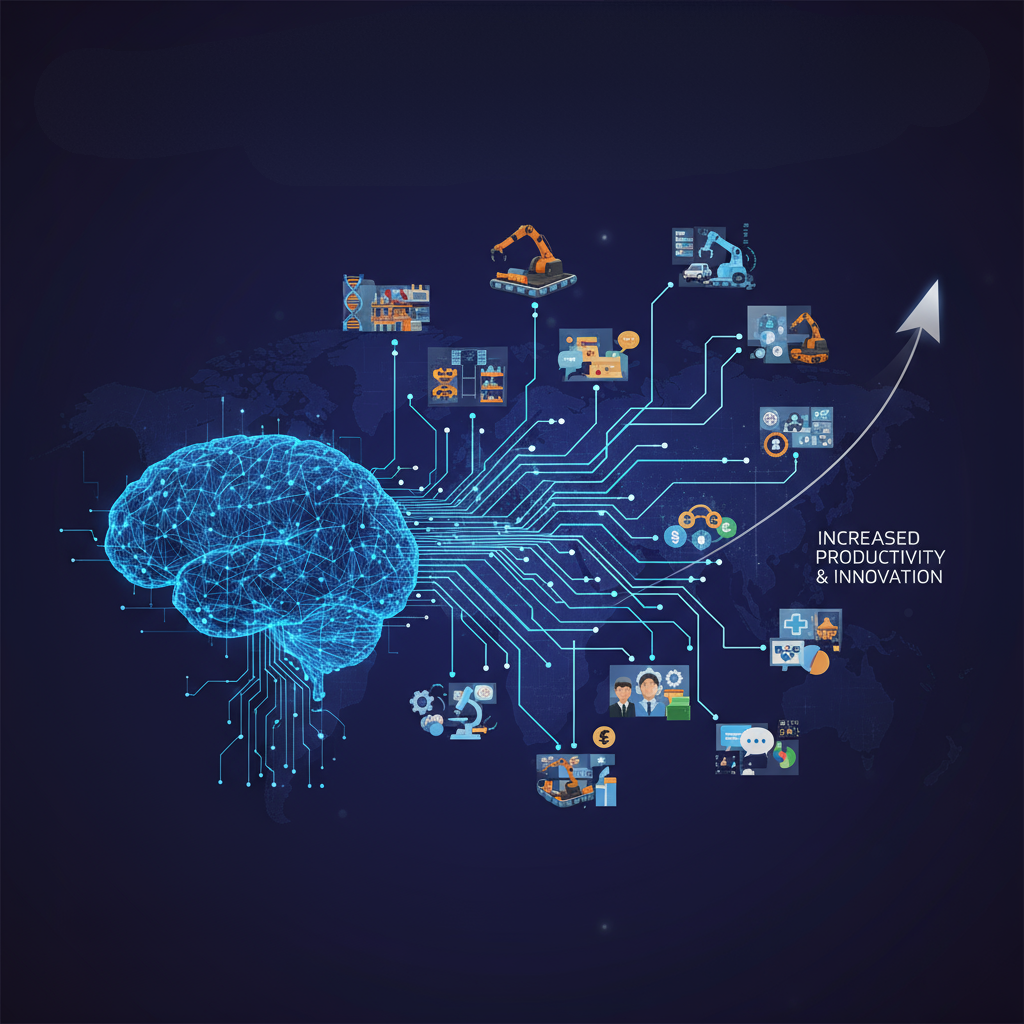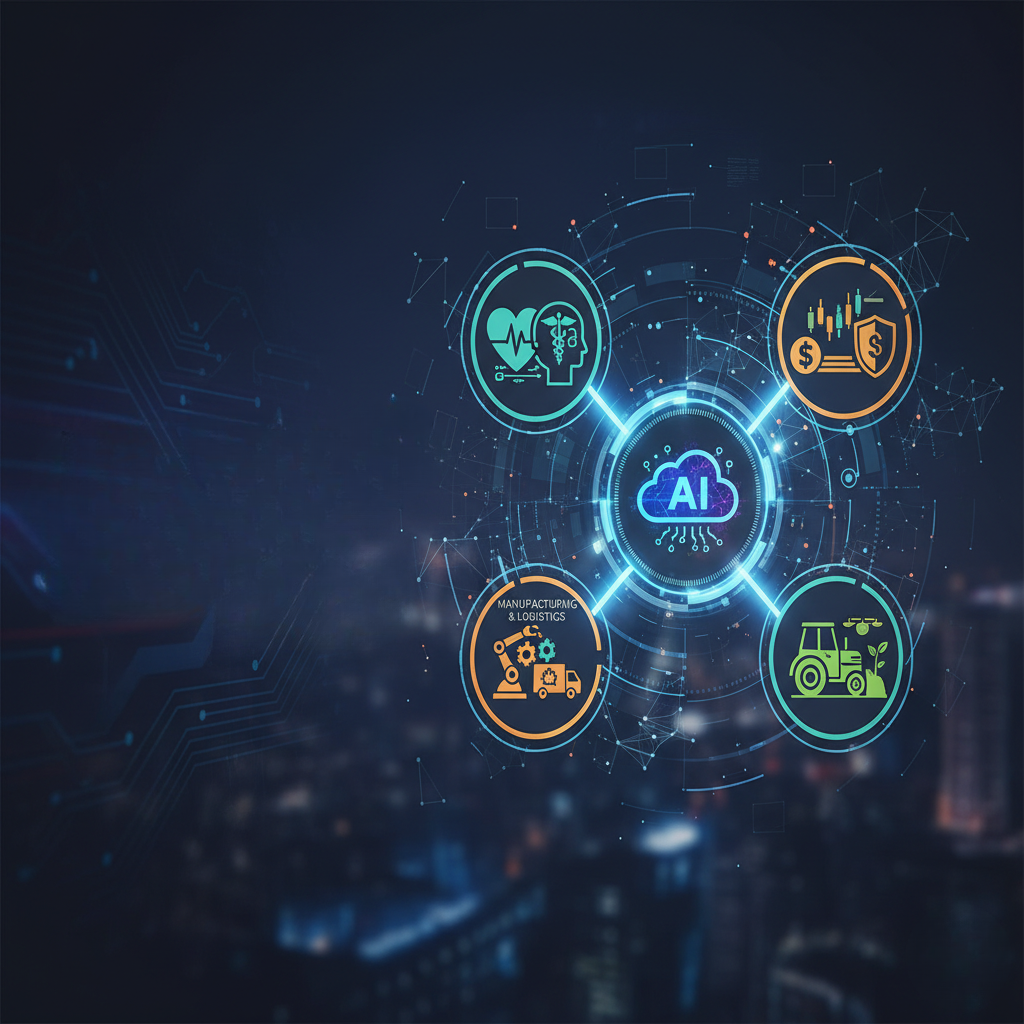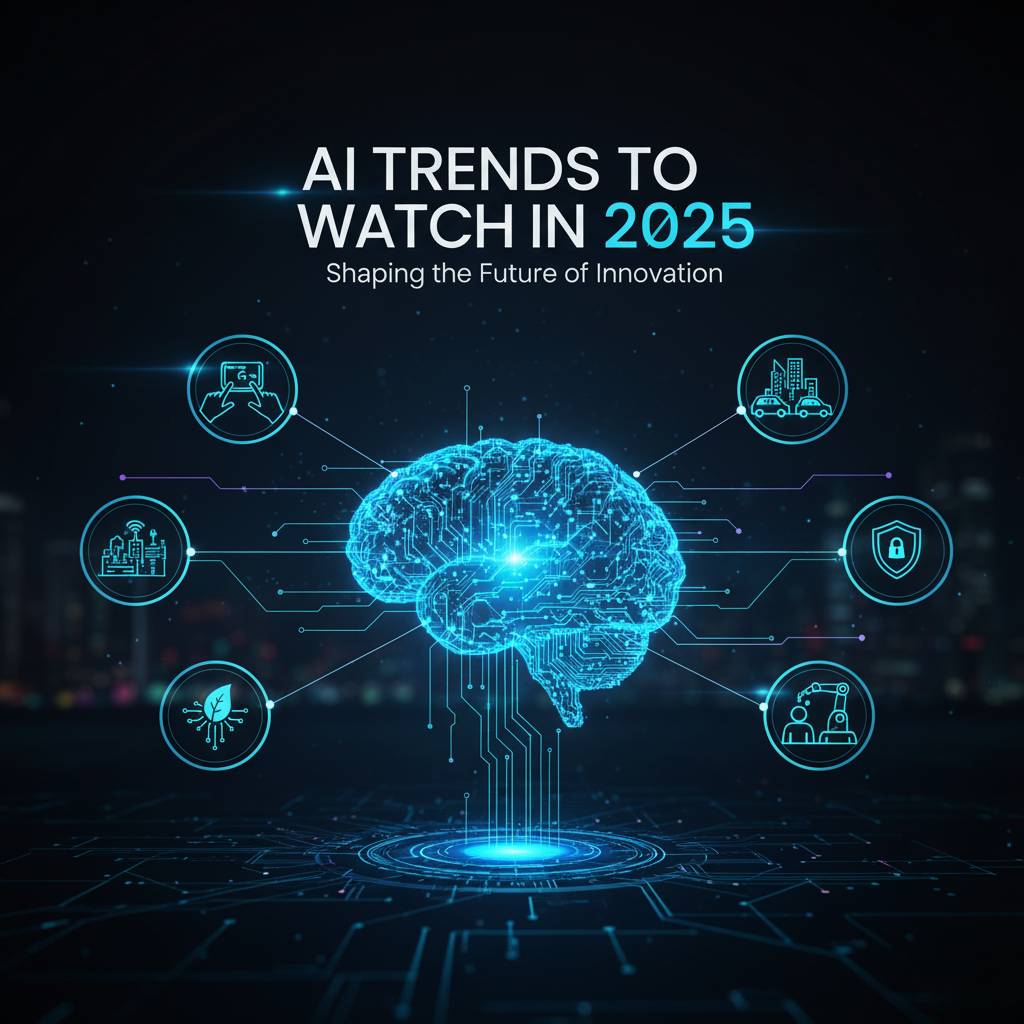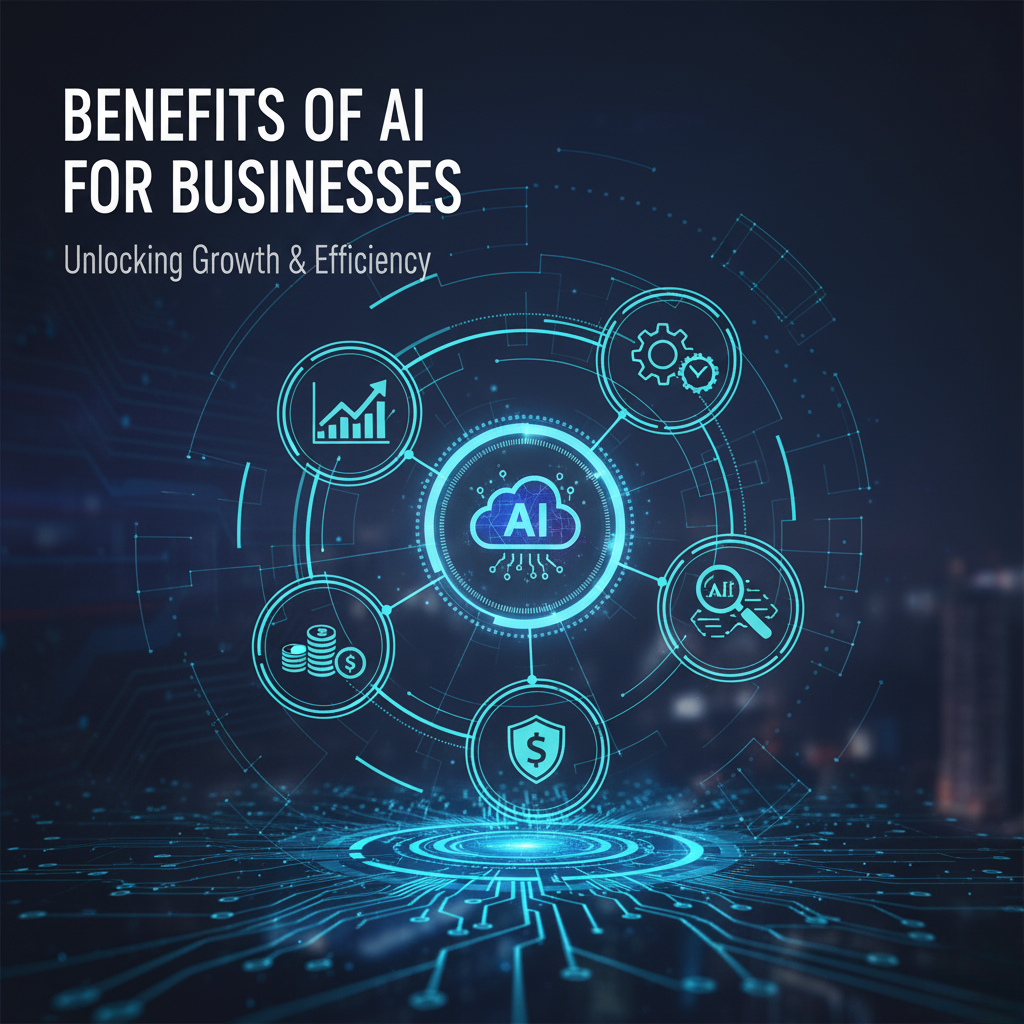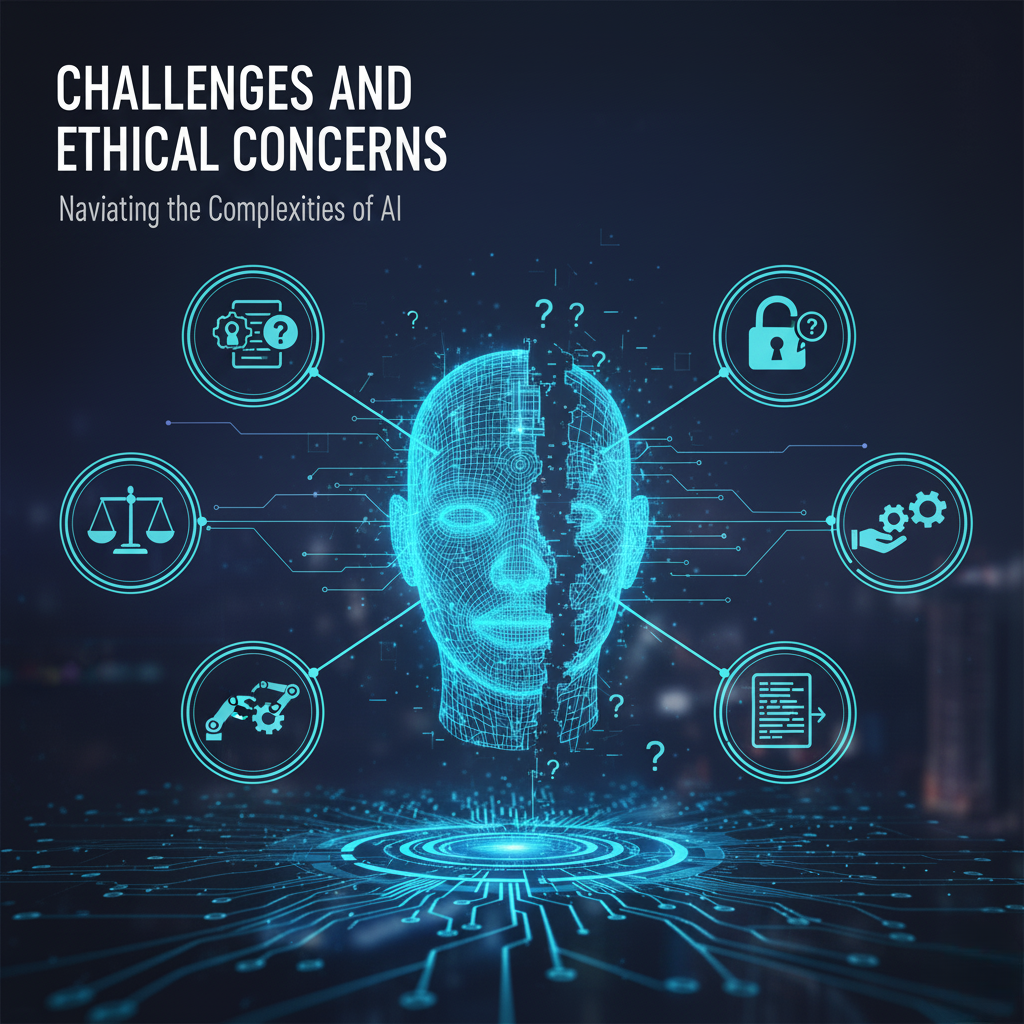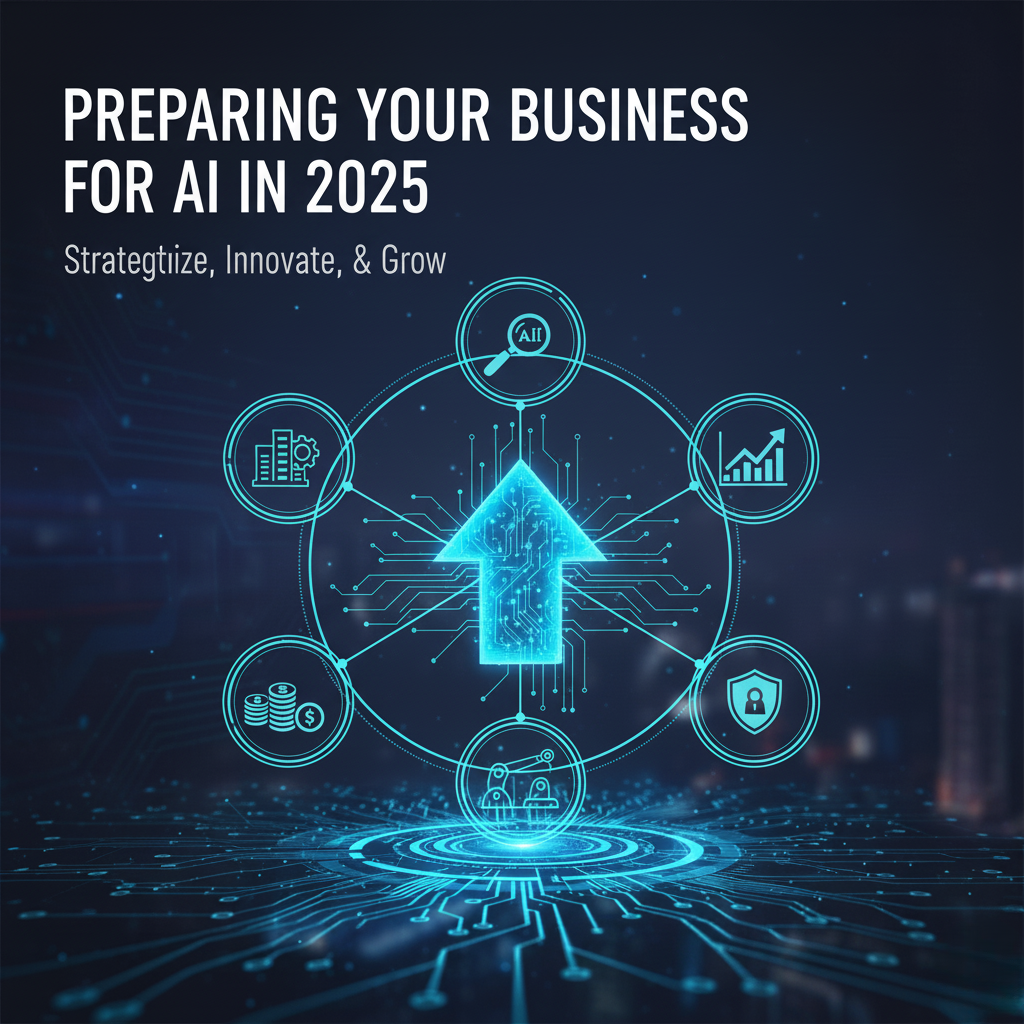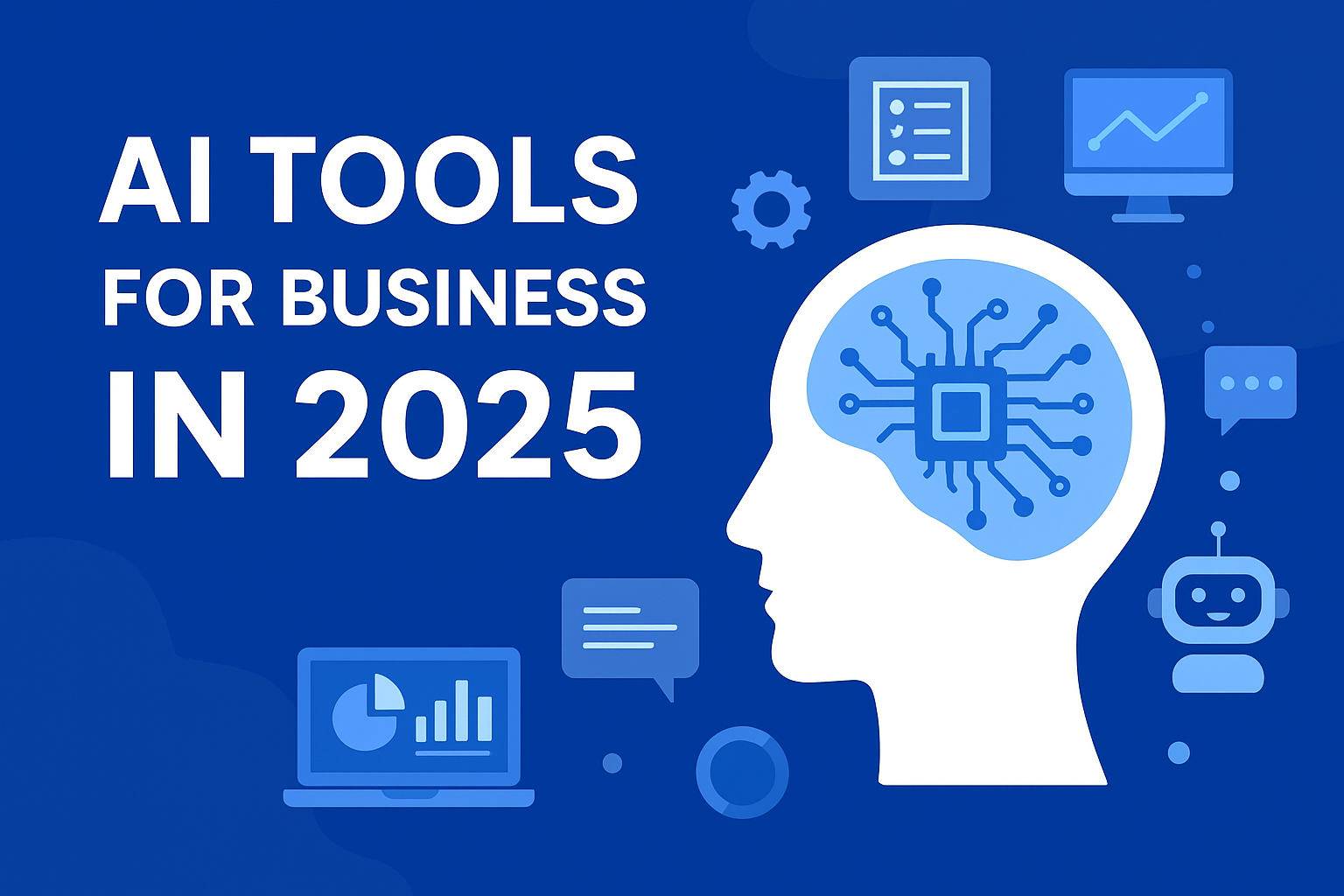“Discover how AI is transforming business, marketing, and finance in 2025. Learn the latest tools, trends, and opportunities shaping the future.”
Introduction
Remember when AI felt like something straight out of a sci-fi movie? Those days are long gone. Today, AI is as common as your morning coffee—it’s in your pocket, on your desk, and probably helping run the business down the street. In 2025, we’re not just talking about convenience anymore. We’re witnessing a fundamental shift in how businesses think, operate, and grow.
The truth is, AI has quietly woven itself into the fabric of modern business. Whether you’re ordering lunch, checking your bank account, or scrolling through social media, there’s a good chance AI is working behind the scenes, making things smoother, faster, and more personalized.
Understanding AI and Its 2025 Evolution
The Growth of AI in the Last Decade
Cast your mind back to 2015. AI was still that mysterious technology companies talked about in hushed, excited tones. It was experimental, expensive, and frankly, a bit unreliable. Fast forward a decade, and everything has changed. AI isn’t a luxury or an experiment anymore—it’s become essential survival gear for businesses trying to keep their heads above water in an increasingly competitive market.
What changed? Well, machine learning models got smarter. Natural language processing—the tech that helps computers understand human speech—became almost eerily good. And then came generative AI, which didn’t just analyze information but started creating it. We went from “Can AI understand us?” to “Wait, AI can write poetry?”
Key AI Technologies Dominating 2025
Let me break down what’s actually making waves right now:
Generative AI is the creative genius in the room. It’s writing articles, designing logos, composing music, and even coding software. What once took hours of human effort now happens in minutes.
Predictive Analytics is like having a crystal ball, except it actually works. Businesses are forecasting everything from sales trends to equipment failures with scary accuracy.
AI Chatbots and Virtual Assistants have evolved beyond those frustrating “Press 1 for…” systems. Today’s AI assistants understand context, remember your preferences, and actually solve problems instead of just redirecting you.
Robotic Process Automation (RPA) is the quiet workhorse handling all those tedious, repetitive tasks nobody wants to do—data entry, invoice processing, appointment scheduling. It’s not glamorous, but it’s transforming productivity.
How AI is Transforming Business Operations
Automating Repetitive Tasks
Let’s be honest—nobody got into business because they loved data entry or filling out spreadsheets. AI has become the ultimate employee for these soul-crushing, repetitive tasks. It doesn’t complain, doesn’t need coffee breaks, and definitely doesn’t mind doing the same thing 10,000 times.
This shift means something profound: human workers finally get to do what they’re actually good at—thinking creatively, solving complex problems, and building relationships. The boring stuff? That’s AI’s domain now.
Data-Driven Decision Making
Here’s where AI really shows its power. Imagine having mountains of data—customer purchases, market trends, competitor movements, social media sentiment. A human analyst might spend weeks digging through it all. AI does it in seconds and spots patterns you’d never see.
It’s like upgrading from a flashlight to night-vision goggles. You’re not just seeing more—you’re seeing things you couldn’t see before. And for business leaders who need to make quick decisions with confidence, that’s a game-changer.
AI in Customer Experience
Think about the last time you shopped online. Did you notice how the website seemed to know exactly what you wanted? That’s AI working its magic. It’s learning your preferences, predicting your needs, and personalizing your experience in real-time.
But it goes deeper than shopping. Whether you’re talking to a bank’s chatbot at 2 AM or getting personalized health advice from a medical app, AI is making services feel more human, not less. Ironic, isn’t it?
AI in Different Industries
AI in Healthcare
Healthcare might be where AI’s impact feels most profound and personal. Doctors are using AI to catch diseases earlier than ever before—sometimes years before symptoms appear. AI analyzes medical images with precision that rivals (and sometimes surpasses) experienced radiologists.
Personalized medicine is becoming real. AI studies your genetic makeup, lifestyle, and medical history to suggest treatments tailored specifically for you. And in operating rooms, AI-assisted robotic surgeries are achieving levels of precision human hands simply can’t match.
AI in Finance
Banks have always loved data, so AI fits right in. Fraud detection systems now spot suspicious activity in real-time, often stopping criminals before they can do damage. Your bank’s AI is watching every transaction, looking for patterns that don’t fit your normal behavior.
Investment advice isn’t just for the wealthy anymore. Robo-advisors powered by AI are democratizing wealth management, giving everyday people access to sophisticated investment strategies that used to require a high-priced financial advisor.
AI in Retail & E-commerce
Walk into any major retailer, and AI is everywhere—even if you can’t see it. Those “You might also like…” recommendations? That’s AI analyzing millions of purchases to predict what you’ll want. Inventory systems use AI to predict demand, ensuring popular items stay in stock while reducing waste.
Dynamic pricing—where prices adjust based on demand, competition, and other factors—is now standard practice. Some people find it creepy, but it’s undeniably effective at maximizing sales while giving customers competitive prices.
AI in Manufacturing
The factory floor has gone digital. Smart factories use AI to predict when machines need maintenance—before they break down. Quality control systems spot defects invisible to the human eye. Production schedules optimize themselves based on real-time demand and supply chain conditions.
This isn’t just about efficiency. It’s about sustainability too. AI helps manufacturers reduce waste, optimize energy use, and minimize their environmental footprint.
AI Trends to Watch in 2025
Generative AI for Creativity
This is where things get really interesting. AI isn’t just analyzing anymore—it’s creating. Marketing teams are using AI to draft campaigns, design visuals, and even compose jingles. Product designers are collaborating with AI to brainstorm innovations.
Some people worry this makes human creativity obsolete. I’d argue the opposite—it’s freeing creative professionals from the grunt work so they can focus on the truly innovative stuff. AI handles the first draft; humans add the soul.
AI-Powered Cybersecurity
With cyberattacks getting more sophisticated every day, traditional security measures are struggling to keep up. AI-powered security systems learn to recognize threats in real-time, adapting to new attack methods faster than any human security team could.
It’s an arms race, really. Hackers use AI to create more sophisticated attacks; defenders use AI to stop them. The machines are fighting each other while we sleep soundly (hopefully).
Personalized Marketing with AI
Gone are the days of one-size-fits-all marketing. AI now creates individualized experiences for each customer. The ad you see isn’t the same one your neighbor sees, even on the same website. Every email, every product recommendation, every special offer—tailored specifically to you based on your behavior, preferences, and predicted needs.
It works almost too well, which is why privacy concerns keep growing alongside AI capabilities.
AI in Workplace Collaboration
Here’s something newer: AI is becoming a coworker. Smart assistants schedule meetings considering everyone’s preferences and time zones. AI tools summarize long documents, extract action items from meetings, and even mediate communications between teams with different working styles.
Virtual AI coaches provide personalized professional development, helping employees learn new skills at their own pace. It’s like having a mentor available 24/7.
Benefits of AI for Businesses
Cost Savings That Actually Matter
When companies talk about AI saving money, they’re not exaggerating. Automation slashes labor costs for repetitive work. Predictive maintenance prevents expensive equipment failures. Optimized inventory reduces capital tied up in stock. AI-powered customer service handles thousands of inquiries without adding staff.
These savings add up fast, often paying for AI implementation within months.
Increased Productivity Across the Board
Productivity gains from AI aren’t subtle—they’re dramatic. Tasks that took days now take hours. Processes that required multiple people now run automatically. Teams can handle more projects simultaneously without burning out.
The best part? This productivity boost doesn’t come from working longer hours. It comes from working smarter.
Better Customer Insights That Drive Growth
AI doesn’t just collect customer data—it understands it. What makes customers happy? When are they likely to cancel? Which products should we bundle together? What’s the next trend before competitors spot it?
These insights lead to better products, smarter marketing, and stronger customer relationships. And in business, that’s what really matters.
Competitive Advantage You Can’t Ignore
Companies using AI effectively aren’t just doing better—they’re operating in a different league. They respond faster, innovate quicker, and serve customers better. The gap between AI-powered businesses and traditional ones is widening every month.
Being slow to adopt AI doesn’t just mean falling behind. It might mean becoming irrelevant.
Challenges and Ethical Concerns
Job Displacement: The Elephant in the Room
Let’s not sugarcoat this—AI is replacing jobs. Not all jobs, and it’s creating new ones too, but certain roles are definitely disappearing. Data entry clerks, basic customer service reps, routine analysts—these positions are vanishing.
The challenge isn’t just economic; it’s human. Real people need to feed their families, and “learn to code” isn’t a solution for everyone. Businesses have a responsibility to help their workforce transition, offering retraining and creating new roles that leverage human strengths AI can’t match.
Data Privacy Issues Getting Murkier
AI is hungry for data—the more, the better. But all that data comes from somewhere: you, me, our customers. Every click, purchase, and search feeds the AI beast.
This raises uncomfortable questions. Who owns this data? How long is it kept? What happens if it’s breached? Can we really trust companies to use it responsibly? The regulations are struggling to keep pace with technology, leaving gray areas everywhere.
Bias and Fairness in AI: A Growing Concern
Here’s something many people don’t realize: AI can be racist, sexist, or otherwise discriminatory—not intentionally, but because it learns from biased human data. An AI hiring tool might favor male candidates because historical hiring data showed a preference for men. A loan approval system might discriminate against minorities because past lending patterns did.
These biases are often invisible until they cause real harm. Companies must actively audit their AI systems for fairness, but many don’t know how or simply don’t bother.
The Transparency Problem
Most AI systems are “black boxes”—even their creators don’t fully understand how they reach certain conclusions. When an AI denies your loan application or flags you as a security risk, good luck getting a clear explanation why.
This lack of transparency creates accountability problems. Who’s responsible when AI makes a mistake that harms someone? The programmer? The company? The AI itself? We’re still figuring this out.
Overdependence on Technology
There’s a real risk of becoming too reliant on AI. When systems fail—and they will eventually—businesses that haven’t maintained human expertise and backup processes can find themselves paralyzed.
Remember the old saying about putting all your eggs in one basket? That applies to AI too.
Preparing Your Business for AI in 2025
Building AI Literacy in Teams
You don’t need everyone to become data scientists, but everyone should understand AI basics. What can AI do? What are its limits? How does it affect our work?
Companies that invest in AI education see better adoption rates and more innovative uses of the technology. When employees understand AI, they stop seeing it as a threat and start seeing it as a tool.
Choosing the Right AI Tools
The AI market is crowded with solutions promising miracles. Don’t chase every shiny new tool. Instead, identify specific problems in your business, then find AI solutions designed for those problems.
Start small with pilot projects. Test, measure, adjust. Scale what works, abandon what doesn’t. And please, read the fine print about data usage and privacy.
Creating an AI-Ready Culture
Technology is easy; culture is hard. The biggest barrier to AI adoption isn’t technical—it’s human resistance to change. Address fears honestly. Involve employees in AI implementation. Show them how AI makes their jobs better, not obsolete.
Celebrate successes, learn from failures, and maintain transparency about AI’s role in your business strategy.
Establishing Ethical Guidelines
Don’t wait for regulations to force you into ethical AI practices. Create your own guidelines now. How will you ensure fairness? Protect privacy? Maintain transparency? Handle AI errors?
Companies that proactively address AI ethics build trust with customers and avoid costly scandals down the road.
Conclusion
AI in 2025 isn’t some distant future technology we’re waiting for—it’s here, it’s now, and it’s reshaping business faster than most people realize. The businesses thriving today aren’t necessarily the biggest or oldest; they’re the ones that embraced AI early and learned how to blend artificial intelligence with human creativity and judgment.
Will AI solve every business problem? Absolutely not. Will it create new challenges and ethical dilemmas? Definitely. But here’s what I know for sure: ignoring AI isn’t a viable strategy anymore. The question isn’t whether to adopt AI, but how to do it thoughtfully, ethically, and effectively.
The future belongs to businesses that see AI not as a replacement for human workers, but as a powerful tool that lets humans focus on what they do best—thinking creatively, building relationships, and solving complex problems that require judgment, empathy, and imagination.
The AI revolution isn’t coming. It’s already here. The only question is: are you ready?
FAQs
1. How is AI helping small businesses in 2025?
The democratization of AI is one of the decade’s biggest surprises. What used to require massive budgets and technical teams is now available as affordable, user-friendly tools. Small businesses are using AI for social media marketing, inventory forecasting, customer service chatbots, and even bookkeeping. Cloud-based subscription models mean you can access powerful AI without huge upfront investments. The playing field isn’t level yet, but it’s definitely more level than before.
2. Will AI replace human jobs completely?
Short answer: No. Longer answer: It’s complicated. AI will eliminate certain roles, particularly those focused on repetitive, predictable tasks. But it’s also creating entirely new categories of work—AI trainers, ethics officers, human-AI collaboration specialists, and roles we haven’t even imagined yet. The real challenge is the transition period. People whose jobs are disappearing need support, retraining, and time to adapt. Society’s handling of this transition will define whether AI becomes a net positive or negative for employment.
3. Is AI safe to use in business?
AI is as safe as you make it. Following data protection regulations, implementing strong cybersecurity, being transparent with customers about AI use, and regularly auditing your AI systems for bias and errors—these practices make AI safer. The risk isn’t AI itself; it’s careless or unethical implementation. Treat AI with the same seriousness you’d treat any powerful business tool.
4. How expensive is AI implementation in 2025?
This varies wildly depending on what you’re trying to do. Simple chatbots and marketing automation tools might cost less than a single employee’s salary. Custom AI solutions for complex problems can still run into six or seven figures. The good news? Costs have dropped dramatically. Most businesses can start small with affordable tools and scale up as they see results. Think of it as an investment, not an expense.
5. What’s the biggest AI trend for businesses right now?
If I had to pick one, it’s the convergence of generative AI and hyper-personalization. Businesses are creating unique, personalized experiences for each customer at scale—something impossible just a few years ago. But keep an eye on AI-powered cybersecurity and workplace collaboration tools too. They’re transforming how businesses operate from the inside out.
6. Can AI be creative, or is it just copying what already exists?
This is one of the most debated questions in tech right now. AI generates content by recognizing patterns in existing data, so in a sense, yes—it’s remixing what came before. But isn’t that what humans do too? We learn from what we’ve seen and experienced, then create new combinations. The difference is consciousness and intentionality, which AI lacks. AI can be creatively productive, but whether it’s truly “creative” in the human sense remains philosophical territory.
7. What happens to my business if I don’t adopt AI?
Honestly? You’ll probably struggle to compete. Businesses using AI can operate more efficiently, respond faster, and serve customers better at lower costs. Not adopting AI is like refusing to use email in the 2000s—possible, but increasingly impractical. That said, AI isn’t mandatory for every single business process. Focus on areas where it provides clear advantages, and don’t force it where human touch matters more.





